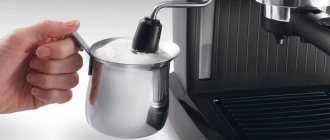Water does not flow into the capsule coffee machine.
You haven’t used the coffee machine for a long time, and when you turn it on, no water flows into the capsule, what can you do?
Images attached:
Adding a solution
It is forbidden to write answers that do not provide any benefit to the questioner from the series: “take it to the service center”, “contact the ASC”, “unprofitable”, etc. Such answers will be considered a rating increase, the answers will be deleted and the account will be blocked.
If you undertake to help people, answer a lot. Explain why, if you recommend, for example, to reflash the phone, then write how to do it. If you write that repairs are unprofitable, explain why.
Adding answers that actually repeat existing answers on this issue will also be considered cheating.
The water in the coffee machine does not heat up - what should I do? (2019).
One of the main reasons for the smooth operation of coffee equipment is its constant and timely service. This will ensure accurate performance of all functions and a long service life. If the device has finished heating water, it is almost always enough to descale it. But the cause of the problem may be more serious than forgotten decalcification.
What should the temperature of the drink be?
The canonical espresso machine prepares with water whose temperature is more than 90 degrees. This is how the drink will get all the taste and smell, taking it from the ground grain. If you drink coffee that is not as hot as you would like, the reason may lie in trifles, for example, in the use of cool utensils. Before making the drink, it is better to warm the cup at least under running hot water.
The second point is incorrect technical options.
To check this, do the following:
- go to the menu;
- find “drink temperature parameters”;
- set the value to the maximum (turn the rotary knob or press the corresponding button repeatedly).
3rd “little thing” – the temperature is influenced by the condition of the brewing device. If it is not heated, the coffee will not be as hot. If you just turned on the device, warm up the system by running a portion of the drink.
Why doesn't the water heat up in the coffee machine?
I will give several common and least favorite circumstances due to which equipment refuses to heat water.
If a cold drink comes into the container, the source may be:
- heating element failure. It can usually burn out or break down due to the fact that its resource has expired. A break may occur in the heating element's power circuit;
- sensor failure - in this case the device cannot find the water temperature, the command to turn on the heating element is not received. Usually, the thermostat needs to be replaced;
- the vapor block is broken;
- Difficulties with the electrical control unit. In this case, the coffee machine brews cool coffee or does not heat the water at all. The reason is a breakdown of the controller - this very thing starts the operation of the heating elements and warms up the unit itself. In most cases, it is enough to replace the controller with a new one.
Difficulties with the heating block, boiler, heating element
The boiler is an essential component of any coffee machine. It is inside this iron element that the water is heated, on which the coffee is then prepared. To ensure that the taste of the drink always remains at the highest level, you need the correct coffee machine options and timely decalcification.
With such a breakdown, the drink has a very low temperature and a weaker taste. The manufacturing cycle itself takes longer than usual. The source of most problems with heating elements is scale.
Sediments are deposited on the walls in a thick layer, corroding them. The taste properties of the coffee will gradually decrease, after which a complete breakdown will occur. Another prerequisite may be that the device spends the night at low temperatures or oxidation of the contacts of the electronic circuit of the boiler.
To extend the life of the device, it is recommended to use preventive measures:
- use of filtered water – on a constant basis;
- decalcification - 1-2 times a year, which depends on the advice of a particular manufacturer.
Solution: change the heating element. If you need to change the tank for heating water, it is first recommended to gain access to it; why the equipment is partially disassembled, connections are unscrewed, pipes are removed, etc. After repair, all parts are placed in place in the correct sequence. In general, it is recommended to entrust this repair to specialists.
Some coffee machines are equipped with smart boilers that can smooth out temperature, pressure, and water level with the slightest deviation from these characteristics. Repair of similar systems is carried out exclusively in service centers.
If the thermostat has failed
It makes sense to dwell on this issue in more detail. The heater thermostat automatically regulates the heating of the boiler, keeps the heating limit under control, incl. low heating Formally, we can call this thing a conditional fuse.
If the thermostat in a coffee machine is faulty, it will never heat the water. This is the 2nd most popular failure after heating elements. To determine the functionality of a node, it is worth checking its resistance. If it is not there, you can safely take the equipment to a service center, although those who are familiar with electrics are completely capable of carrying out the replacement without the help of others.
This is done schematically like this:
- the device is de-energized;
- the supply tap with cool water is turned off (if the machine is running on water supply);
- all available liquid is combined;
- the protective casing is removed, the fasteners are unscrewed;
- the flange and pressure ring of the heating element are dismantled;
- the thermostat sensor and the regulating relay are disconnected;
- A new thermostat, pressure ring, and casing are installed on the boiler.
It is better to photograph each step of the disassembly process so that the correct sequence is observed during assembly.
Vapor block failure
If you love delicious milk and coffee sweets, cappuccino with foam, such a unit of the device, like the steam block, should always be in impeccable condition.
If the machine is unable to produce steam and stops producing steam, the prerequisites are as follows:
- complete breakdown of the unit;
- the power supply circuit of the steam unit flew;
- temperature sensor failure;
- the system is overgrown with a layer of scale.
Solution: installation of new sealed rings to replace worn ones, which is best done at a service center, complete replacement of the unit and sensors. To do this, the device will be disassembled, the old vapor block will be removed, a new one will be installed and reassembled.
Some sources of damage can be removed without the help of others. The user can carefully clean the hole through which the steam is supplied.
Breakdown of the electrical inside of the coffee machine
No matter what modern coffee equipment is, these are clever devices that perform a wide range of functions. The more a device can do, the more perfect its control board is. This is one of the most expensive components, the repair of which will cost a pretty penny.
Breakdown of the button board
This thing is responsible for correct operation and switching of functions. A malfunction can directly affect the temperature of the finished drink. The board consists of many microcircuits and wiring that can burn out, become clogged, or fail. The solution is to completely replace the part.
Thermal sensor failure
The temperature sensor monitors the temperature of the water in the boiler, brewing unit, etc. Without this little thing, you won’t be able to make a good, reliable drink. 2nd point – operating the coffee machine becomes dangerous. This is why timely repair is so important. After diagnosis, the sensor is changed to a new one.
Temperature controller failure
A controller, or PID controller as it is commonly called, is a device that provides the highest level of temperature stability. In fact, this is a more modern temperature sensor. This thing evaluates the configuration of temperature characteristics in an unchanged mode and controls the heaters depending on the results of the evaluation. If a breakdown occurs, the coffee machine may lose its ability to heat. Repairs are carried out at the service center.
Most coffee machines have a ton of exciting technology built into them. Some of them are focused on achieving a certain water temperature and maintaining it at many stages of making the drink, which expands the ability to work with coffee to new heights. Such breakdowns are among the most annoying and costly; to quickly restore the equipment’s performance, I advise you to contact a service center.
Coffee machine KRUPS KP 150910 NESCAFE® Dolce Gusto GENIO - review.
Why doesn't my coffee machine dispense water?
The most common malfunction of the device is the situation when the coffee machine does not supply water. This breakdown can be caused by many reasons, including careless handling of the device. The most typical reasons for the lack of water supply to the nozzles are a dirty filter and failure of the float sensor. If the coffee machine does not supply hot water, then only comprehensive diagnostics will help.
The float sensor may be flooded with water or clogged with foreign particles. One of the reasons why the coffee machine does not see or dispense water is that the water in the reservoir is too hot. It is highly undesirable to do this, since in this situation the air is released from the float, and when the water cools, a vacuum is formed. It then sucks liquid into the sensor.
How to get rid of scale?
If water does not flow from the coffee machine group, then this is a symbol that it is time to descale it. To do this, if the coffee maker does not have an automatic cleaning function, you need to:
- purchase a special descaling agent from a Delonghi, Saeco, Krups or other coffee maker (see photo);
- according to the instructions, mix it with water and pour it into the water tank;
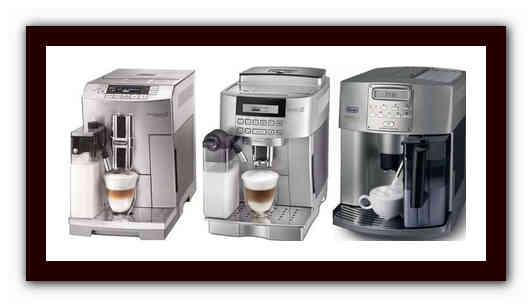
- open the boiling water tap and drain a little water from it;
- turn on the device and allow a small amount of solution to be prepared, which at this time will fill the entire system;
- turn off the device and let it stand for approximately 15 minutes;
- turn on the device again and expel the remaining liquid through the system;
- fill the water tank with clean water and wash the system;
- perform the previous step 2 more times.
After the work has been done, a Delonghi, Krups, Saeco, Bosch or Nescafe Dolce coffee maker thickly, depending on what you have at home, will make delicious coffee a little faster. The difference after the work will be visible immediately.
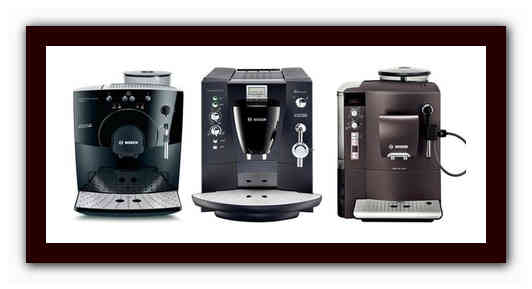
Main reasons for failure
When the coffee machine does not draw water, several components can be sources of breakdowns. They fail due to careless operation, natural wear and tear, or manufacturing defects. The main culprits are:
- clogged filter;
- housing leakage;
- float failure;
- control panel problems;
- electronics failures.
If the machine does not flow water, some models show an error on the display, which makes troubleshooting easier. For example, the need to clean or replace the filter.
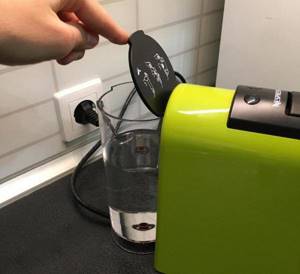
Clogged filter
Modern devices, including Saeco and Bosch, have special filter cartridges installed to clean the working fluid. They are necessary to eliminate excessive accumulation of foreign substances and reduce the amount of scale formation. If you use the device for a long period of time, the filters need to be replaced. Regulated periods can be found in the operating instructions or on the manufacturer’s official website.
It is important to note that if you ignore the replacement of filter elements, there is a risk of damage to adjacent components, including the pump. When there is no water flowing, it runs idle. Leads to increased loads, overheating, and accelerated wear. Accordingly, the node breaks after a short period.
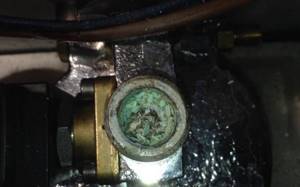
Clogged lines
In situations where water does not flow into the coffee machine, one of the common reasons is clogging of the pipes connecting to the tank. In some cases, it is possible to clean the joints yourself. Experts strongly do not recommend cleaning the tubes themselves. Please note that tubes are not sold separately for all models. You will need to purchase a complete unit. Don't take risks, choose the services of professionals.
If water does not flow from the coffee machine, the cause of the breakdown is directly related to improper use of the device or lack of proper maintenance. In rare situations, incorrectly selected coffee grinding prevents the finished coffee from passing through.
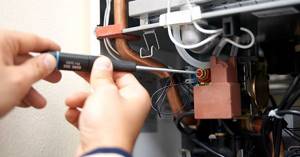
Float sensor failure
The operation of the device is directly related to it. The float transmits data to the control panel, which determines the presence of water in the tank. If you poured water into the tank, but the equipment does not take the water, then this unit is broken. The device does not “know” whether there is liquid in the storage tank.
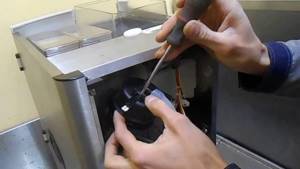
Electronics malfunctions
Problems include:
- damaged wiring;
- oxidation of contacts;
- faulty keys;
- software failures.
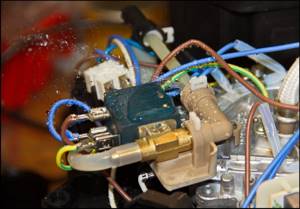
Water leaking from under the horn
If water flows in the Delonghi coffee machine, then first you need to check whether the o-ring of the horn is clogged with fatty deposits or foreign elements. If it is dirty, you need to thoroughly wash it. You will also need to clean the Delonghi device with special means in the same way as in the case of scale.
Water flows from the Krups coffee machine even in this case if the sealing ring has burst. In this case, it must be removed. To do this, you can use an ordinary screwdriver, with which the ring is carefully pryed off. If severe damage occurs, the seal will need to be replaced with a new one. The coffee filter may become clogged with coffee deposits. If you don’t clean it in time, the water will look for other places to exit. This problem can be solved painfully simply - by painstaking cleaning.
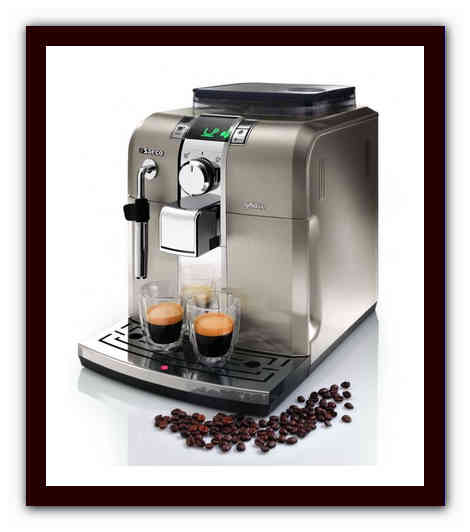
Leaking from under the coffee maker
If the problem is not in the o-ring or in the filter of the horn, and water is flowing from the Delonghi coffee machine, then the problem could be in anything, for example, oil seals or silicone tubes, which over time begin to become covered with cracks. In this case, they just need to be changed. In addition, the reason that water is leaking in the Saeco coffee machine may lie in improper transportation of the coffee maker or operation at low temperatures. In this case, iron and plastic elements and adapters explode. Repairing existing parts will most likely yield nothing, and the problem will appear again. Also, to repair a Delonghi device, you don’t necessarily have to change the entire system, just find the damaged part and replace it with a new one.
Nescafe Dolce Gusto Circolo.
Delonghi
The reason that water does not flow into the Delonghi coffee machine may be scale or other contaminants. Use an anti-scale agent or clean the device using improvised means (brush, toothpick). The tubes in this model should be cleaned especially carefully, as they are easily scratched. Try to avoid this, because even more fat or scale will then settle in the uneven areas. You will have to clean your coffee machine much more often.
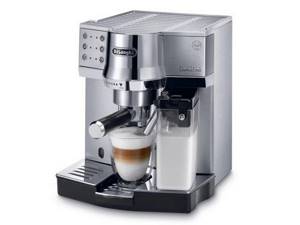
Coffee machine Delonghi
Questions and answers
Dolce Gusto's development provides the best temperature for perfect coffee. If you increase the temperature of the drink, the ground coffee will have a burnt taste.
For those who prefer their coffee hotter, there are several options: • Preheat your cup ahead of time. • Be sure to wait until the indicator stops flashing while the thermoblock is heating before preparing your drink. • Before installing the capsule, pour a little water from the machine into the cup, pour it out, then install the capsule and prepare the drink. • If scale appears in the machine, remove it (if you only noticed a decrease in the temperature of drinks recently).
The usual temperature of the drink in a cup: • Capsules with roasted and ground coffee: above 70 C° • Capsules with instant coffee: above 65 C°
If you have just purchased a coffee machine and are about to use it for the first time, read the instruction manual. Operating instructions for all machines can be found on our website.
Here are some tips for good use that will be helpful for you: 1. Fill the water tank. 2. Install it into the machine and lock it until it clicks. 3. Turn on the machine and wait until the indicator turns greenish. 4. Before first use, the machine must be cleaned. To do this, select the largest amount of water, place an empty container under the drink outlet, press “Cold water” (blue button) and wait until all the water flows out. Repeat the process in the “Hot water” position (reddish button). Your machine is now ready to use. 5. Fill the water tank. 6. Insert the capsule into the holder. 7. Select the desired water level (the volume of water is indicated on the capsules). 8. Select “Cold/Hot water” depending on the drink you want. 9. Wait until the indicator turns green before removing the capsule. 10. Throw away the used capsule.
Features of repair of capsule coffee makers
The Dolce Gusto capsule coffee machine does not supply water - most likely the outlet hole needs to be cleaned. All models of this company - Nescafe, Nespresso, Krups - have a very thin needle from which water pours onto the capsule and which pierces it.
Limescale can cement the needle when the coffee maker has not been turned on for a while. Some models have a special wire at the back that cleans the hole in the needle. After cleaning, you need to turn on the coffee maker again and check how the coffee machine pumps water. If over time the coffee starts to flow out more slowly, the system is clogged again.
If water does not flow thickly in your Krups, Nescafe or Nespresso Dolce coffee maker, you can do a general cleaning with citric acid - dilute 2 teaspoons in a glass of water and pour into a container. There is no need to insert a capsule. Wait until the cloudy liquid comes out.
